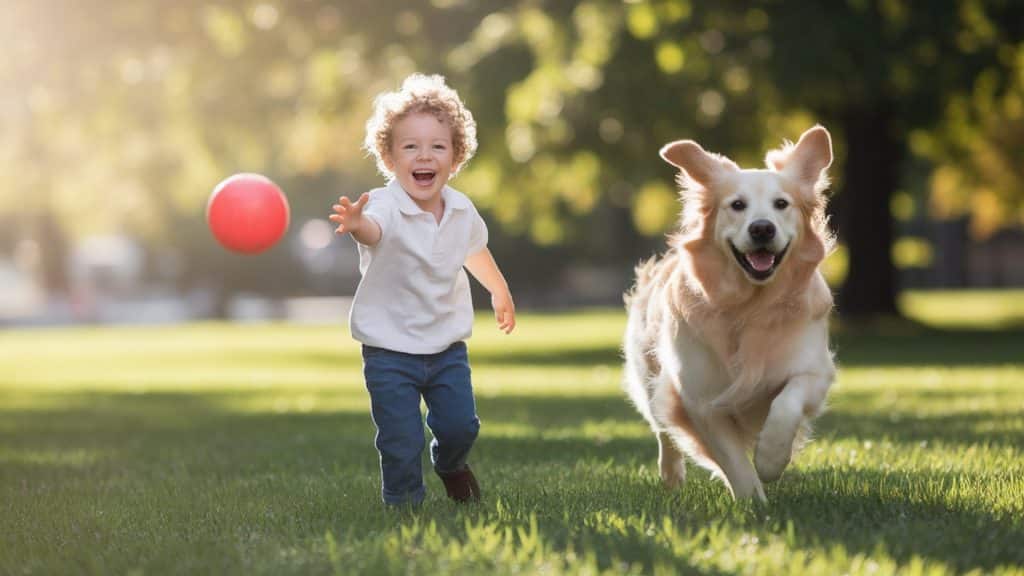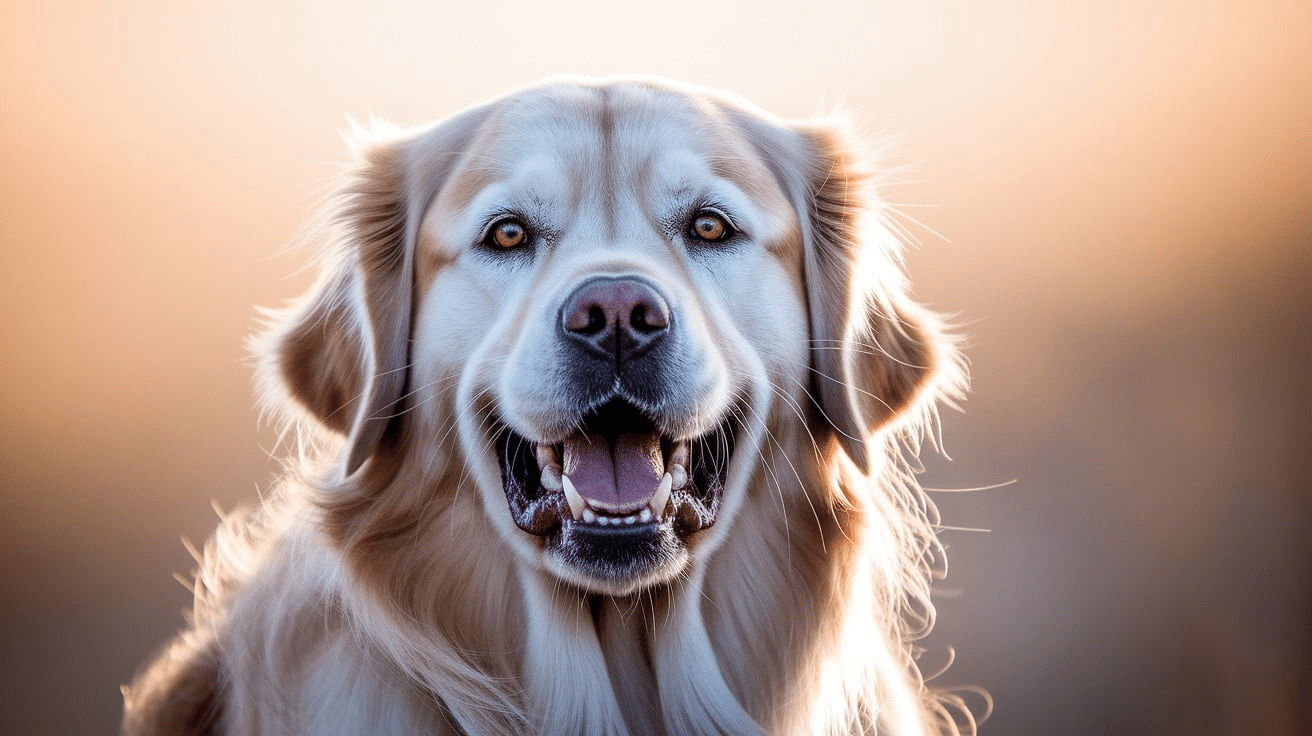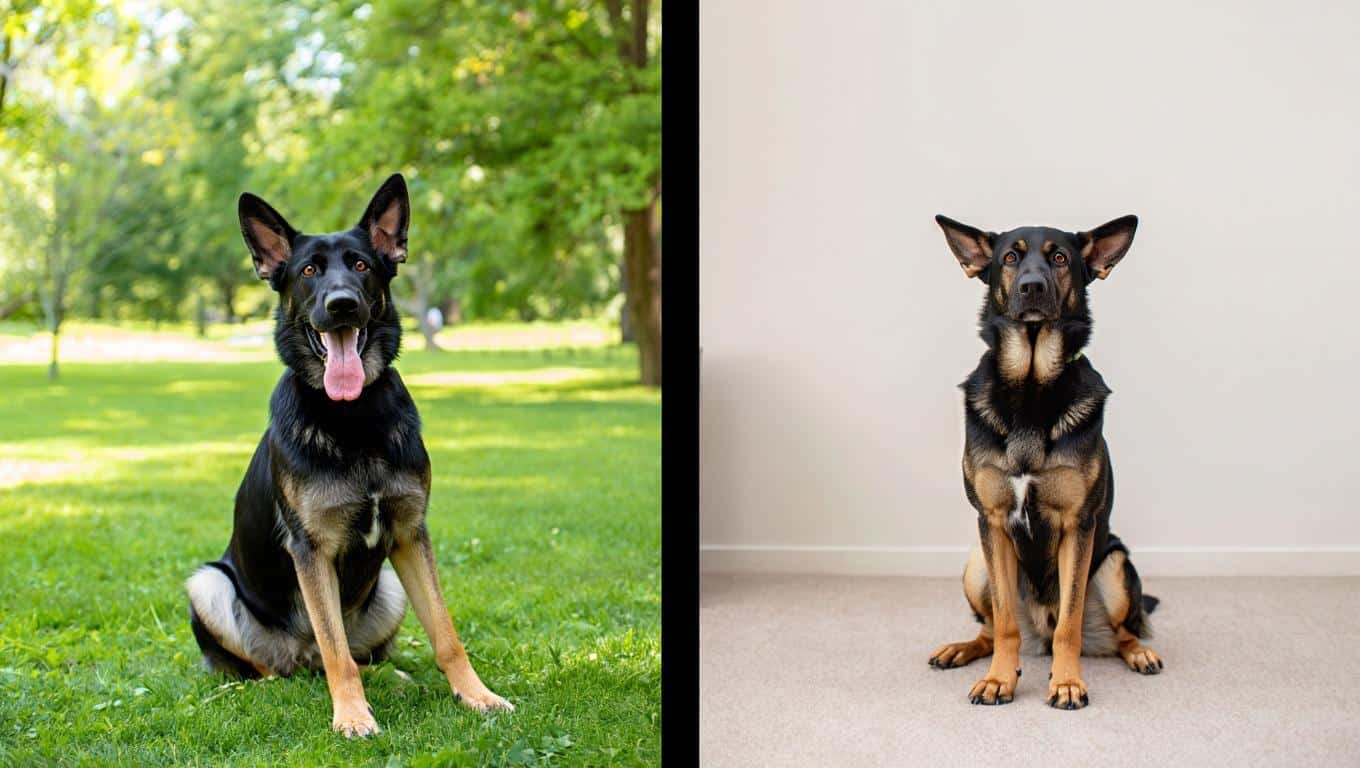Did you know that dogs can smell things we can’t even imagine? Or that they dream just like we do?
Dogs are animals full of surprises! If you have a furry friend at home or just love learning about these special pets, this blog will share super cool dog facts that will make you say “wow!”
From their super-powered noses to their unique paw prints, we’ve gathered the most interesting dog facts that kids of all ages will love.
Get ready to become a dog expert and impress your friends with your new knowledge!
1. Dogs are Super-Powered Sniffers
Dogs have incredible noses that work 10,000 times better than ours! They can smell things we can’t even imagine, like hidden diseases and even cancer, before doctors can find it.
Their noses can pick up scents that are buried under several feet of snow. That’s why dogs help police find missing people and detect dangerous substances.
Do You Know? Some dogs can even smell when their owners’ blood sugar is dropping or when someone is about to have a seizure!
2. Every Dog has a Unique Nose Print
Just like people have unique fingerprints, dogs have their own special nose prints. These patterns make each dog one of a kind and can even be used for identification!
The patterns of ridges and bumps on a dog’s nose are one-of-a-kind, and in some countries, nose prints are even used to identify dogs instead of microchips; even identical puppies can be told apart this way.
3. Dogs Experience Bright Dreams During Sleep
Dogs experience bright dreams during deep sleep cycles, just like humans. You might notice them twitching, barking, or moving their legs while dreaming.
Studies show their brain waves during sleep are similar to ours. Puppies, seniors, and small breeds tend to dream more often.
4. Dogs See the World Through a Different Color Spectrum
Dogs don’t see colors the same way we do; their world looks completely different!
They mainly see blues, yellows, and various shades of gray. Red and green look exactly the same to them, kind of like some colorblind people.
Dogs have only two color-detecting cells, so they see fewer colors than humans.
5. Dogs Use Their Tails to Communicate
A dog’s tail is like an emotional billboard, showing how they feel. A wag usually means they’re happy, while a high, stiff tail can mean alertness or tension.
A tucked tail shows fear, and a fast wag with a wiggling body means they’re super excited.
Fun Fact: dogs wag more to the right when happy and to the left when anxious!
6. Dogs Understand Human Language Better Than You Think
Dogs can understand about 250 human words and gestures, similar to a 2-year-old child! They’re constantly learning the meaning of words like “walk,” “dinner,” “ball,” and “good dog.”
They pay attention not just to what you say, but how you say it, your tone of voice, body position, and even small changes in your facial expressions.
Fun Fact: Some exceptionally intelligent dogs, like border collies, have learned over 1,000 different words!
7. Petting Dogs Creates a Special Chemical Bond
When you pet a dog, great things happen in both your bodies! Your heart rate slows down, your blood pressure decreases, and your body releases “feel-good” chemicals called endorphins and oxytocin.
The same thing happens in the dog’s body, too!
This special reaction is why dogs make such wonderful therapy animals for people in hospitals, nursing homes, or those who are feeling sad or anxious.
Fun Fact: Petting a dog for just 15 minutes can calm you like some medications. It also boosts your immune system and helps your body fight off illnesses!
8. Fastest Dog Breeds are Speedy Superstars
Some dogs can run faster than Olympic sprinters! Breeds like Greyhounds, Salukis, Vizslas, and Afghan Hounds can reach speeds up to 45 mph.
Greyhounds are especially fast thanks to their unique running style.
Fun Fact: Greyhounds use a “double suspension” run where all four feet leave the ground twice in each stride!
9. Dogs have Wet Noses
Moisture on dogs’ noses enhances their scent detection by trapping odor particles, and licking refreshes this moisture to maintain optimal smelling.
10. Newborn Puppies are Helpless Heroes
Puppies are born blind, deaf, and without teeth, and they can’t go to the bathroom without their mom’s help. Within 2 weeks, their eyes and ears open, and by 2 to 3 weeks, they begin to walk.
By 8 weeks, they’re playful, curious, and ready to explore the world around them.
11. The Truth About Dog Years is More Complex
The idea that one human year equals seven dog years is a myth. Dogs age quickly in their first two years, then slow down depending on their size.
Giant breeds may be seniors by age 6, while small breeds stay youthful until around 10 to 12.
A better guide is: the first year equals 15 human years, the second adds 9, then 4–5 years for each one after.
12. Dogs Cool Down Differently Than Humans
Dogs don’t sweat like humans. They cool off mainly by panting, which helps release heat through moisture in their tongue and lungs.
They also sweat a little through their paw pads, which can leave wet prints on hot days. During panting, their breathing can jump to 300–400 times per minute!
Keeping them cool is important because dogs can overheat quickly.
13. Dogs Hear What Humans Can’t
Dogs have incredible hearing abilities that far surpass humans. While humans can hear sounds up to about 20,000 Hertz, dogs can detect frequencies as high as 65,000 Hertz.
They can also hear sounds from four times farther away than we can. Their ear muscles help this skill; dogs have over a dozen muscles in their ears, compared to just three in humans.
These muscles allow their ears to move independently in 18 different ways, helping them pinpoint exactly where a sound is coming from.
14. Dogs have More Teeth and Different Functions
Dogs have 42adult teeth, more than the 32 teeth humans have. Puppies are born with 28 baby teeth, which begin to fall out as they grow, making way for their permanent adult teeth.
Each type of tooth serves a purpose: incisors for nibbling, canines for tearing, and molars for grinding food.
This specialized dental structure helps dogs eat a variety of foods and perform tasks like carrying objects or chewing toys.
15. Dogs Sleep More but Differently Than Humans
Dogs sleep a lot!
About 12 to 14 hours a day, which is nearly twice as much as humans. Puppies and senior dogs may sleep up to 18-20 hours.
They nap on and off throughout the day and night, but since most of their sleep is light, they wake up easily. Only about 10% of their sleep is deep.
16. Whiskers: Your Dog’s Built-In Radar
Dogs’ whiskers, also called vibrissae, are more than just cute! They’re powerful sensors.
Found mainly on the muzzle and above the eyes, these long, stiff hairs are deeply rooted and packed with nerves.
They help dogs sense tiny changes in air movement and nearby objects, allowing them to navigate their surroundings confidently, even in the dark or tight spaces.
17. A Dog’s Tongue Does More Than Lick
A dog’s tongue is a multi-tool designed for much more than eating and slurping.
They curl their tongues backward to lap water efficiently, flicking up to four times per second. This rapid motion creates a water column that they quickly snap their jaws to catch.
Their tongues also aid in cooling by promoting evaporation during panting. Saliva contains mild enzymes that help with minor wound care.
18. Dogs have Special Pads on Their Paws
Dogs’ paws have thick, tough pads that protect their feet from rough surfaces and cold weather. These pads help dogs walk quietly, letting them sneak around when playing or hunting.
Fun Fact: Some service dogs wear tiny doggy boots to protect their paws on hot sidewalks or slippery floors.
19. Dogs Can Learn Tricks by Watching
Dogs are smart and can learn tricks by watching other dogs or humans.
They quickly understand body language and actions, which helps them learn new things faster.
20. Some Dogs have Webbed Feet
Certain dog breeds like Labradors and Newfoundlands have webbed feet that help them swim better.
Their feet work like paddles that make moving through water easier.
21. Dogs Can Get Sunburned
Dogs with light fur or pink skin, especially on noses and ears, can get sunburned.
They need shade or dog-safe sunscreen to protect their skin on hot, sunny days.
Fun Fact: There is special doggy sunscreen made just for pups who love the outdoors!
22. Dogs have a “Mental Map” to Find Their Way Home
Dogs have an amazing sense of direction and can find their way back home even from miles away. They use a combination of scent trails, landmarks, and the Earth’s magnetic field like a natural compass.
This “mental map” helps them navigate unfamiliar areas and explains why some dogs manage to return after getting lost.
23. Dogs have a Powerful Sense of Time
Dogs can sense the passage of time and often know when it’s time for walks, meals, or when their owners are about to come home.
They do this by picking up subtle environmental cues, internal biological clocks, and routine patterns. Some studies even suggest dogs can detect differences in time intervals of just a few minutes!
24. Dogs Can Understand Your Mood
Dogs can tell if you are happy, sad, or angry by looking at your face, hearing your voice, and noticing your body language.
They often try to comfort you when you feel upset.
25. Dogs have Better Night Vision Than Humans
Dogs can see better in low light or darkness because their eyes have a special layer that reflects light.
This helps them spot movement in the dark.
Fun Fact: Dogs’ eyes can even reflect light at night, making them sparkle like tiny flashlights.
26. Dogs Use Their Ears to Show Feelings
Other than their tails, dogs use their ears to show how they feel. Perked up ears mean curiosity or alertness, while flattened ears show fear or shyness.
Dogs can move their ears independently to hear better.
27. Dogs have a Great Memory for Places
Dogs remember places well.
If you take your dog to a park once, they will remember it and get excited when you visit again.
28. Dogs Can Count Up to Five
Some dogs can understand numbers and count up to about five.
They can tell which pile of treats has more without counting every piece.
29. Dogs’ Tail Shapes Can Help Identify Their Breed
Different dog breeds have various tail shapes, curly, straight, or corkscrew.
The shape and position of the tail can help identify what breed or mix the dog might be.
Fun Fact: On ancient coins, you can sometimes spot different dog tail shapes to show favorite breeds.
30. Dogs Change Their Bark Depending on the Situation
Dogs can use different types of barks, growls, or whines to express what they want or feel.
For example, an excited bark sounds different than a warning bark.
Some scientists believe dogs even adjust their barks’ tone or rhythm to send specific messages to people and other animals
31. Dogs Use Their Tails to Help Them Balance
A dog’s tail isn’t just for communication; it also helps them balance while running, jumping, and making quick turns.
The tail acts like a counterweight to keep the dog steady and agile during fast movements.
Fun Fact: Puppies often chase their own tails while practicing balance before they grow up!
Final Thoughts
Dogs are full of fun facts that show how special they really are. We learned about their dreams, tail signals, sleep habits, speed, and even their smart whiskers.
There is still a lot more to learn about these amazing pets. Dogs do many things that are funny, helpful, and full of surprise every single day.
Every dog has something cool about it, and learning these facts can help us understand and love them even more.
Which dog fact surprised you the most?
Tell us in the comments below so we can see which ones you liked best.





























